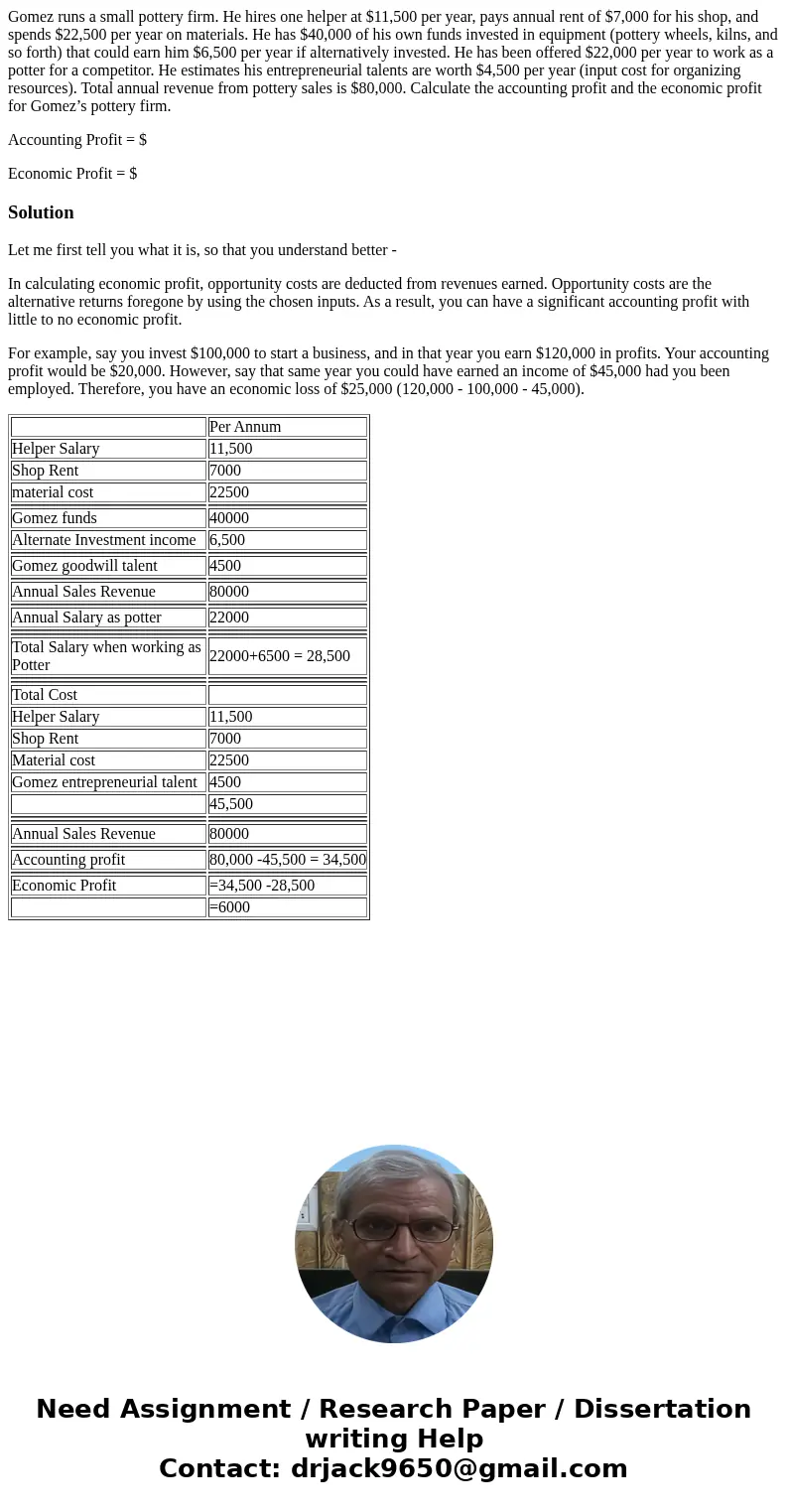Gomez runs a small pottery firm He hires one helper at 11500
Gomez runs a small pottery firm. He hires one helper at $11,500 per year, pays annual rent of $7,000 for his shop, and spends $22,500 per year on materials. He has $40,000 of his own funds invested in equipment (pottery wheels, kilns, and so forth) that could earn him $6,500 per year if alternatively invested. He has been offered $22,000 per year to work as a potter for a competitor. He estimates his entrepreneurial talents are worth $4,500 per year (input cost for organizing resources). Total annual revenue from pottery sales is $80,000. Calculate the accounting profit and the economic profit for Gomez’s pottery firm.
Accounting Profit = $
Economic Profit = $
Solution
Let me first tell you what it is, so that you understand better -
In calculating economic profit, opportunity costs are deducted from revenues earned. Opportunity costs are the alternative returns foregone by using the chosen inputs. As a result, you can have a significant accounting profit with little to no economic profit.
For example, say you invest $100,000 to start a business, and in that year you earn $120,000 in profits. Your accounting profit would be $20,000. However, say that same year you could have earned an income of $45,000 had you been employed. Therefore, you have an economic loss of $25,000 (120,000 - 100,000 - 45,000).
| Per Annum | |
| Helper Salary | 11,500 |
| Shop Rent | 7000 |
| material cost | 22500 |
| Gomez funds | 40000 |
| Alternate Investment income | 6,500 |
| Gomez goodwill talent | 4500 |
| Annual Sales Revenue | 80000 |
| Annual Salary as potter | 22000 |
| Total Salary when working as Potter | 22000+6500 = 28,500 |
| Total Cost | |
| Helper Salary | 11,500 |
| Shop Rent | 7000 |
| Material cost | 22500 |
| Gomez entrepreneurial talent | 4500 |
| 45,500 | |
| Annual Sales Revenue | 80000 |
| Accounting profit | 80,000 -45,500 = 34,500 |
| Economic Profit | =34,500 -28,500 |
| =6000 |

 Homework Sourse
Homework Sourse